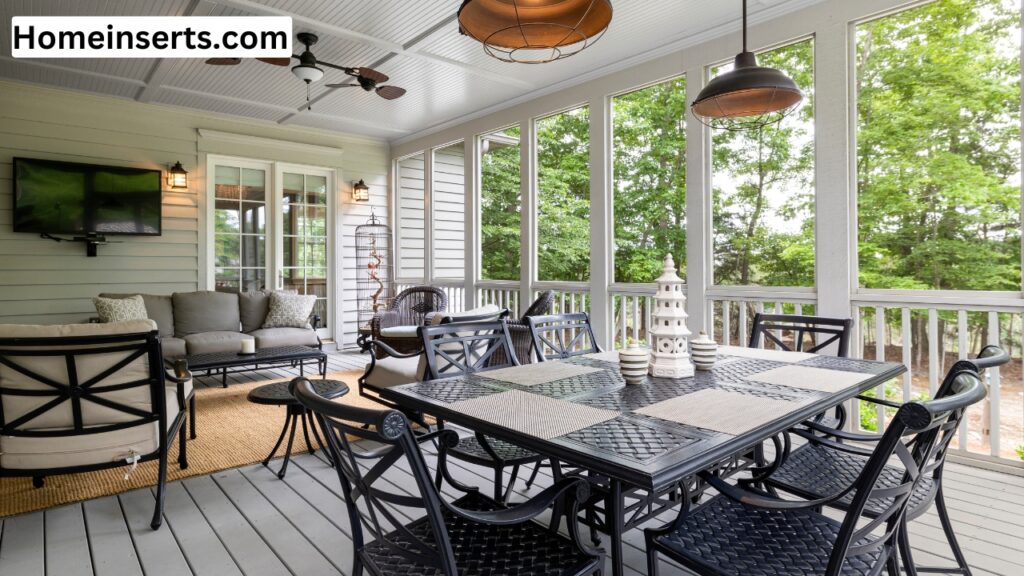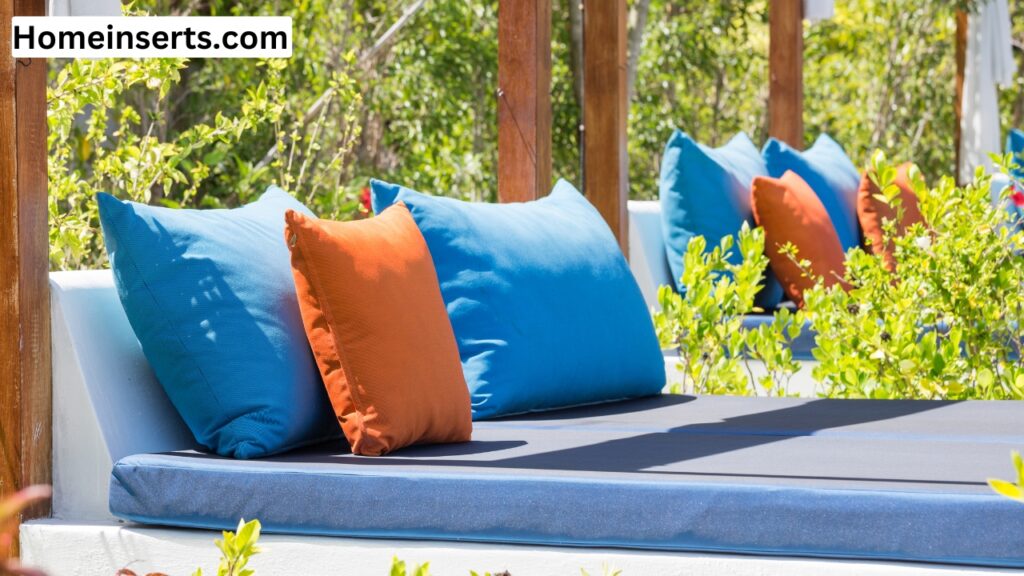
Making your outdoor space a sanctuary of warmth and comfort has everything to do with choosing the right furniture. Whether one is looking for a quaint retreat on a patio or dining fashionably under stars, the material one chooses will make all the difference in durability, comfort, or aesthetics. With such a large array of choices, a good tip on what works best for you and for your budget will make all the difference.
This guide shall focus on various types and material considerations in outdoor furniture, as it tends to highlight their pros, price ranges, and weave tips to enhance your outdoor decor. Let’s dive into finding the perfect fit for your space!
1. Wicker and Rattan: Light in Weight and Classic
Wicker and rattan have been used for decades because of their natural beauty and excitement in outdoor decoration. These are made either from natural plant fibers or synthetically manufactured to serve better for durability.
Price Range: Artificial wicker is affordable, whereas natural rattan is usually a little more expensive.
Durability: The artificial ones are weatherproof and UV-resistant, thereby suitable for outdoors. Natural rattan is gorgeous but needs to be kept away from too much water or direct sun.
Style: Wicker and Rattan outdoor sectional furniture works with bohemian and coastal themes, and even traditional settings when plush cushions are added.
Best For: Covered patios or mild weather conditions.
Pro Tip: Add colorful cushions and throw blankets for personality in your outdoor decor while comforting the space more at the same time.
2. Wood: Rustic and Versatile
Wood furniture conveys warmth and a natural look to any outdoor setting. Different woods are offered with various levels of durability and also require different levels of maintenance.
- Teak: Renowned for its weather-resistant natural oils, teak is considered a premium yet long-lasting choice.
- Acacia: At its moderate cost and with style, the wood requires frequent sealing to maintain its beauty.
- Eucalyptus: It is sustainable, resistant enough to weather, and thus a balance between cost and durability.
- Cedar: Lightweight, resistant to pests, it may require staining from time to time.
Durability: Wood does need regular maintenance, like oiling or sealing to protect it against moisture, cracking, and fading in the sun.
Best For: Open-air decks, gardens, or pergola-covered areas.
Pro Tip: Pair wood furniture with outdoor rugs for a personalized touch in your outdoors.
3. Metal: Resilient yet Stylish
Metal furniture has been tagged as strong and modern. It is good for those homeowners who want strength and wish to give their home a contemporary look.
A look at some common metals used in making outdoor furniture:
- Aluminum: Light, does not rust, and is rather inexpensive, this furniture is so easy to move around and clean.
- Steel: Very sturdy, very strong, but unless treated, it does rust.
- Wrought Iron: Strong, elegant, and hence ideal for areas where the wind might affect it, wrought iron furniture needs periodic touch-ups so it does not rust.
Durability: Powder-coated finishes can give metal more resistance to corrosion and chipping, making it really durable for one’s outdoor decor.
Best For: Open patios or areas with variable weather conditions.
Pro Tip: Add cushions with weather-resistant fabrics to make metal seating more comfortable and inviting.
4. Plastic and Resin: Affordable and Low Maintenance
Plastic and resin furniture has come miles, and today offers stylish and durable options for the budget-conscious homeowner.
Cost: Cheapest material option in outdoor furniture.
Durability: High-quality resin furniture is weatherproof and doesn’t fade, while the cheaper plastics will degrade over time.
Style: Plastic furniture is versatile and comes in many colors and designs suitable for an outdoors decoration theme.
Best For: Families with children or homes that experience extreme weather conditions, the light weight and ease of cleaning makes it ideal for such situations.
Pro Tip: Choose UV-resistant resin furniture to keep your furniture colorful without cracking due to sun exposure.

5. Concrete: Modern and Durable
Concretes have become popular due to their industrial, modern look and unbeatable durability.
Price: Higher-end, given the weight of the furniture and the labor involved in its making.
Durability: Withstands extreme weather conditions; however, it may have cracks if not sealed properly.
Style: Its minimalist look perfectly pairs with sleek and modern outdoor decor.
Best For: Large outdoor spaces or urban patios seeking a bold design statement.
Pro Tip: Add cushions or textured elements to soften the appearance and make concrete furniture more inviting.
6. Fabrics and Cushions: Comfort Meets Style
While not an independent furniture material in themselves, the fabrics you choose for your outdoor cushions and upholstery significantly impact both comfort and durability.
- Look for: Sunbrella or Olefin fabrics are treated to be weather-resistant, UV-protected, and easy to clean.
- Foam and fillers: Quick-dry foam makes sure your cushions don’t hold water after a rain.
Pro Tip: Mix and match colors and patterns to infuse personality into your outdoor decor. Bright tones like yellows or blues can add vibrancy, while neutrals keep it sophisticated.

7. Hybrid Material: The Best of All Worlds
For a really unique and personalized look, consider furniture that combines different materials. For example:
- A teak dining table with aluminum legs interleaves warmth with modernity.
- Wicker chairs with plush cushions enjoy both texture and comfort.
- Concrete coffee tables with wooden accents create a bold yet welcoming vibe.
Pro Tip: Mixing different materials together creates visual interest in your outdoor decor; at the same time, you can effectively balance budget and functionality.
How to Choose the Best Material for Your Budget
Your choice depends on a mix of factors:
- Budget: Decide on an amount that you want to spend. If you want inexpensive options, plastic or resin would do the trick. Valuable investments include teak and wrought iron for a lifetime with style.
- Weather Conditions: If you reside in an area that gets constant rain, then you can use synthetic wicker, aluminum, or resin as the material to weatherproof the furniture.
- Maintenance: If you are not into being bothered with maintenance tasks, then you can use aluminum, synthetic wicker, or plastic. Wood and wrought iron take higher maintenance.
- Aesthetic Preference: Match the material to your theme of the outdoor decor-be it rustic, modern, or eclectic.
How to Elevate Your Outdoor Decor:
Once you have chosen your ideal furniture, complete that look with these decorating tips:
- Lighting: Create ambiance with string lights, lanterns, or solar-powered garden lights.
- Greenery: Add in some greenery-like potted plants, hanging baskets, or vertical gardens for a lush feel.
- Outdoor Rugs: Accent spaces such as dining or seating areas with weather-resistant area rugs.
- Accessories: Throw pillows, blankets, and table decor will help make the space cozy.
Conclusion
Selecting the proper materials for your outdoor furniture is not a task that should intimidate you. For any budget, there is available material to create an outdoor space both functional and beautiful. Whether you choose rustic wood, resilient metal, or more affordable plastic, the key is to choose pieces that complement your outdoor decor and lifestyle.
Remember, your outdoors are an extension of your home-a place to relax with family and friends and to create memories. Make purchases you’ll love, take care of your furniture, and enjoy in comfort and style in a perfectly curated outdoor oasis.